Ubisense's* release of myWorld 4.3 represents a significant step forward for the myWorld product and our end users. The headline feature is the new Network Modeller module. This gives myWorld users the ability to run sophisticated network traces that support a range of key business processes in communications and utility companies.
Network Tracing
Network tracing is a specialized operation that queries the connectivity of an asset network. For example, a common scenario on a gas network is to trace out from a location that has a leak to identify all the valves that need to be closed to isolate that section of the network so that repairs can be safely carried out. The above example shows such a trace on a section of gas network.
In addition to identifying all the valves that isolate this section, the trace can find all customers that are in the affected section, so they can be notified and so that their pilot lights can be re-lit once the gas supply is restored.
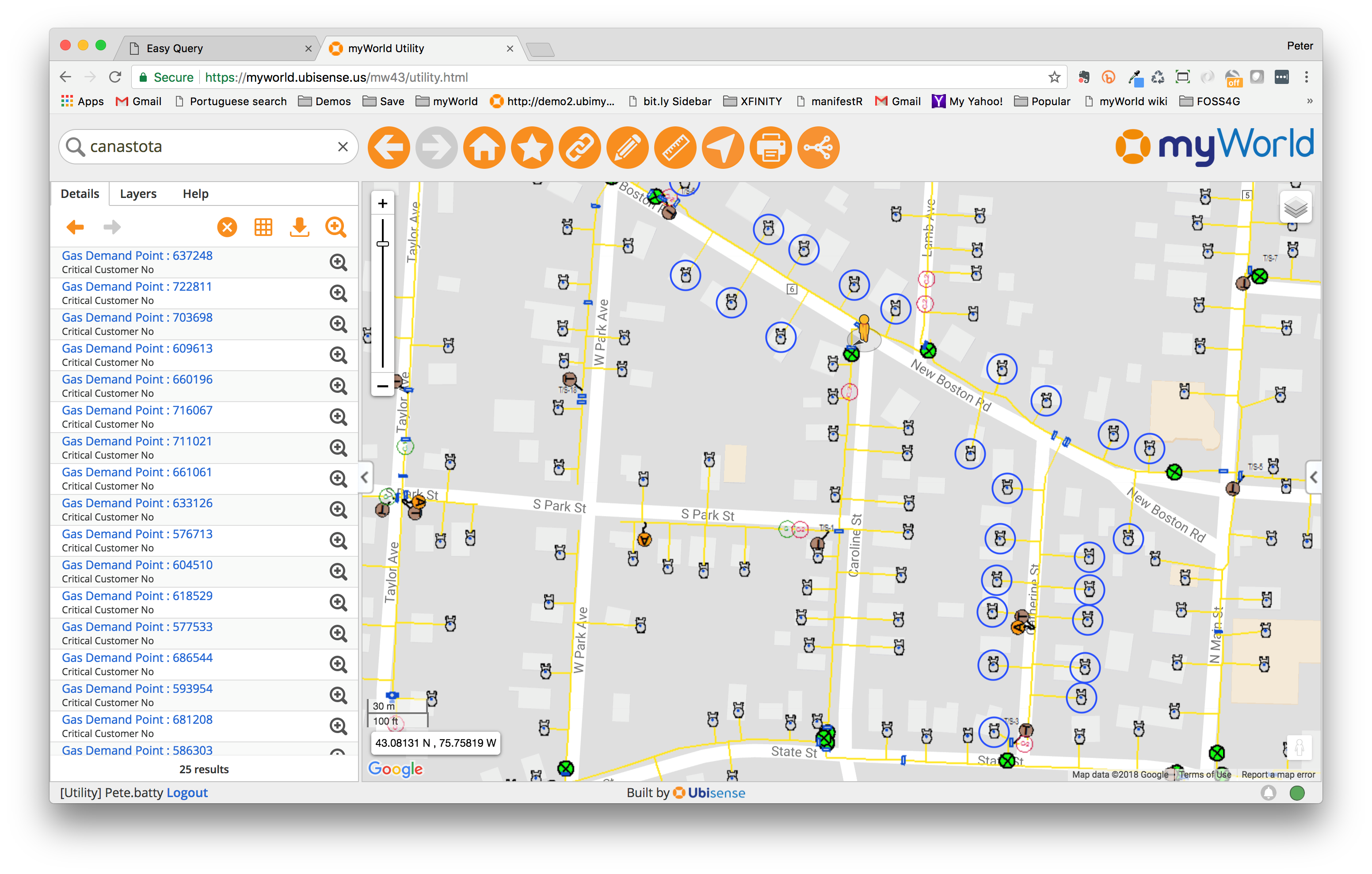
Similar operations apply on an electric network, for example identifying the isolating devices that need to be switched in order to cut off power to a section of network, or identifying the customers downstream of a selected device, who would lose power if that device was opened. Typically electric networks are more complex than gas or water networks, as they have multiple phases that can be traced independently, and have some more complex devices.
Communications networks are even more complex, with requirements for tracing at different levels of the physical network through complex equipment, as well as tracing logical network connections. Tracing may go through both outside plant and inside plant equipment, such as racks and bays. The following screen shot shows an example of tracing through a building floor plan (which is modelled as an “internal world” or “detail view” in network focused GIS products) as part of a larger trace through a communications network.
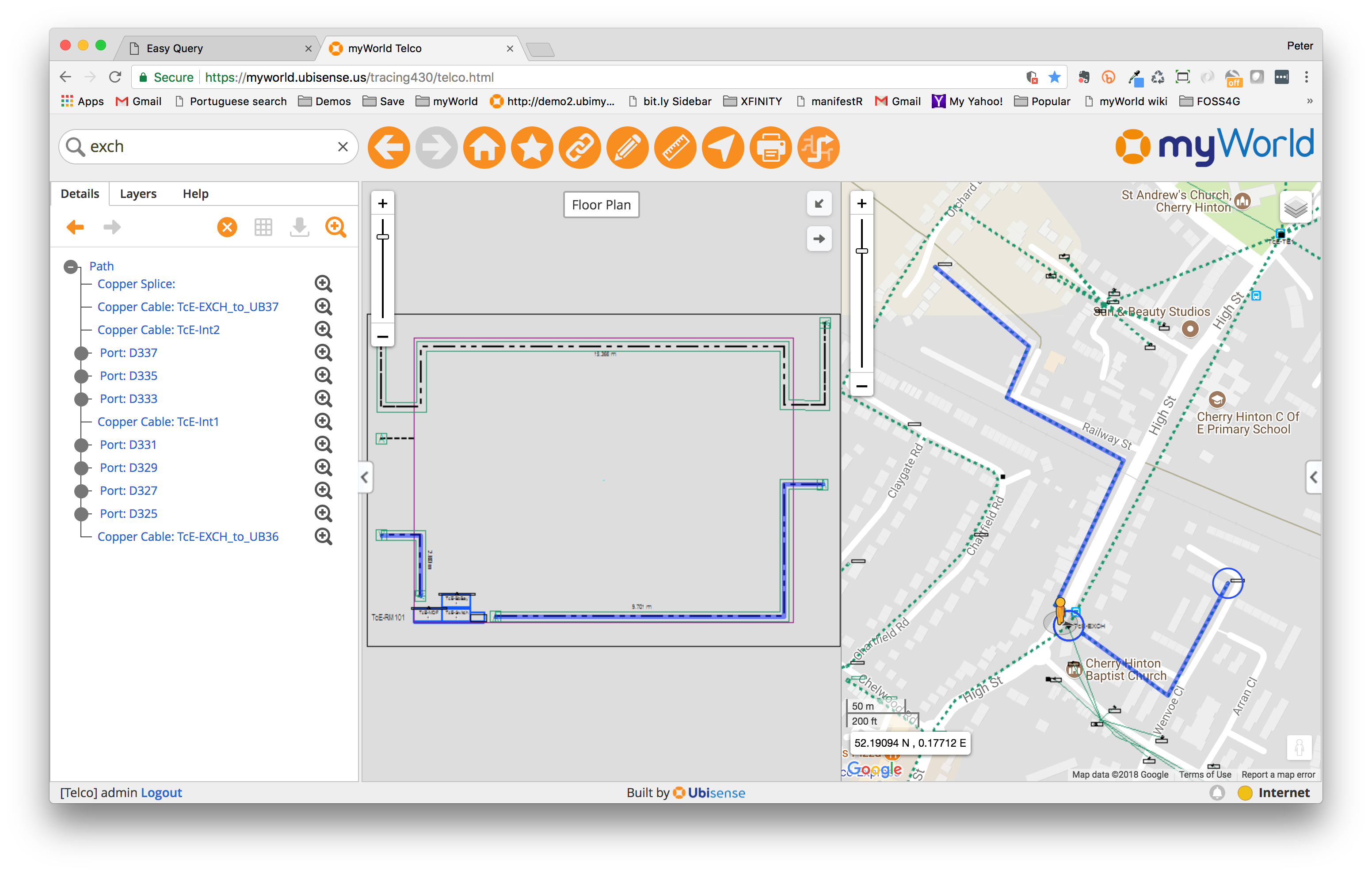
Another common operation for communications companies is an OTDR (optical time-domain reflectometer) trace. OTDR equipment is used to send an optical pulse down a fiber that has been cut, and based on the light reflected back, the equipment can tell how far it is to the location of the cut. By tracing this distance through the fiber in myWorld, the location of the damage can be accurately calculated, enabling the repair crew to find and fix the problem more quickly.
The following screen shot shows an OTDR trace calculating a location that is 2200m along the fiber running from the selected port in the cabinet shown in the “internal world” diagram.
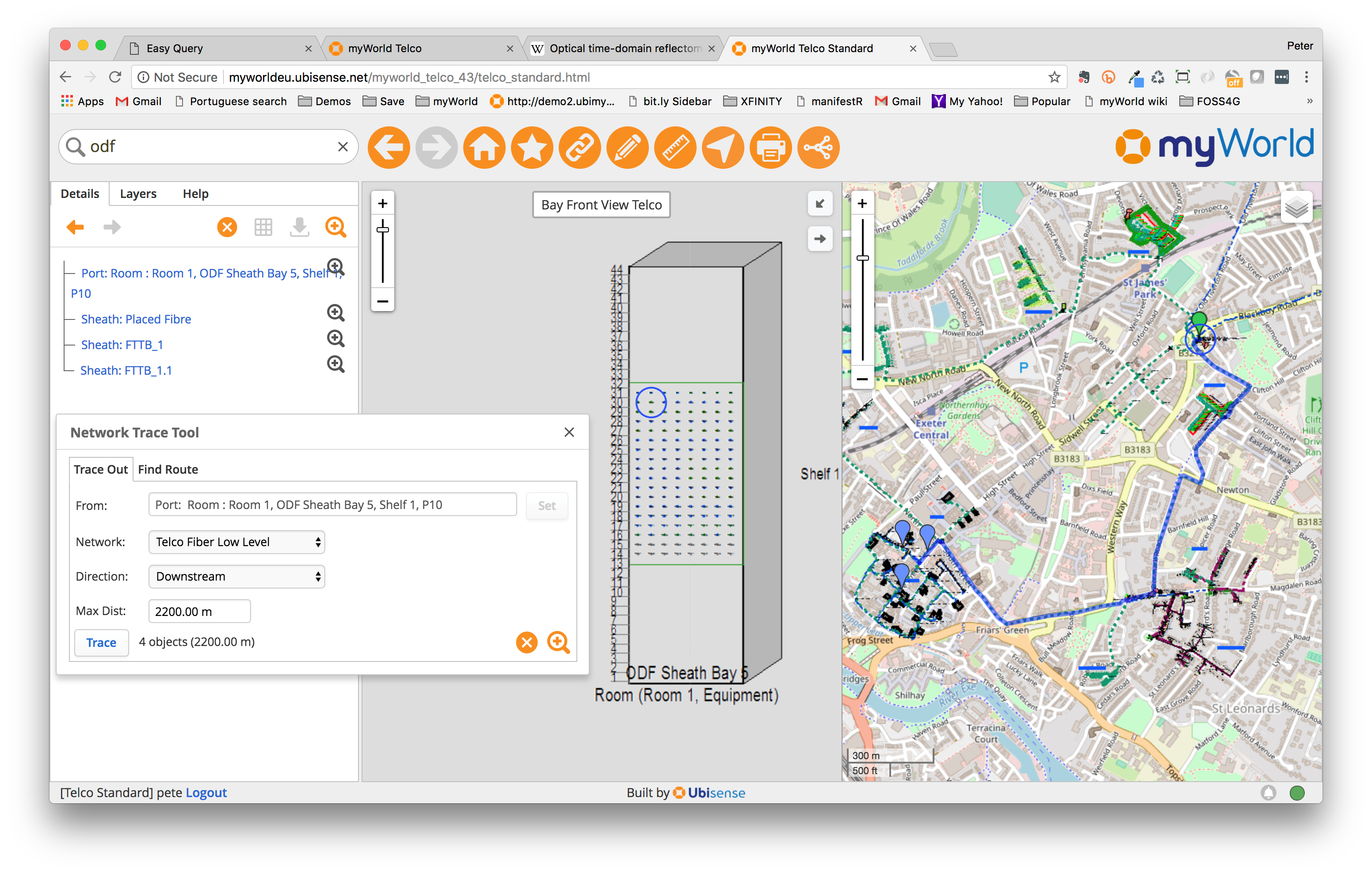
The myWorld Network Modeller
An ongoing philosophy of the myWorld product has been “simple, smart and fast”, and the myWorld Network Modeller embodies this. It is very smart: it can be configured to carry out even the most complex types of tracing operation, that previously were only available in high-end network-focused GIS products, and were typically very complex to use. The myWorld Network Modeller hides this complexity, making trace functionality available to everyone. Identical tracing capabilities are available both online and offline, on all supported myWorld platforms, including phones, tablets or laptops running Android, iOS or Windows. It can use network data from any of the major GIS products, including Esri, Intergraph, GE Smallworld and spatialNET and can work with communications, electric, gas and water networks.
Other features of myWorld 4.3
myWorld 4.3 also includes a range of other user-driven enhancements, including the following:
- Enhancements to myWorld’s Google Street View capabilities, which customer feedback indicates are very popular with users. Google Street View is now available at any location in myWorld, whereas previously it was only available around assets that were stored in myWorld. The “peg man” can be dragged around the map, together with a visual indication of where Google Street View data is available, as in the consumer Google Maps application. In addition, the date that Google Street View data was captured is displayed. All of these changes make Street View even more useful in a wider range of situations: it can often help avoid the need for a trip to the field, by giving an indication of what the location looks like, for example what the surface material is in front of a certain house.
- Support for legends for individual layers in the layer panel, including Esri, OGC and native myWorld layers. This strengthens myWorld’s “any data” capabilities, providing rich functionality with direct access to a wide range of data sources.
- Phone framework enhancements, which add functionality to the myWorld phone application and make it easier to extend. This capability was leveraged in our recent release of the myWorld Inspection and Survey application on the phone.
- Cordova plugin support: this is a foundational capability that will enable future support for barcoding, Bluetooth and other lower level capabilities.
- Search refinements for certain specific cases including handling of identifiers with spaces, and performance improvements. myWorld one box search is one of our most popular features, providing intuitive Google style search across multiple spatial data sources, and refined over the last eight years.
- Layers can now be configured so that transparency can be changed on the fly by end users – this capability was previously only available to administrators.
- Initial support for vector tiles: currently this is only available online. In future, vector tiles will enable reduction of offline data volumes for certain types of data, especially basemaps.
Summary
myWorld 4.3 continues the evolution of myWorld as a mature platform for enterprise geospatial applications, delivering any data to any device, anywhere. It brings the “simple, smart, fast” philosophy of myWorld to complex network applications, making a wide range of network-centric business capabilities much more widely accessible than they were previously.
myWorld is now the IQGeo Platform
The 6.0 release of our software included a product name change from myWorld to the IQGeo Platform. This change reflects our focus on the IQGeo corporate brand that was launched at the beginning of 2019. Our website and latest product user interface have made the transition from the old myWorld name to the new IQGeo Platform name. Learn more about the IQGeo Platform 6.0 release.
*IQGeo launched to accelerate global growth of geospatial software
On January, 3, 2019, we launched the new IQGeo corporate brand, following the completion of the sale of the Ubisense brand and RTLS SmartSpace division.

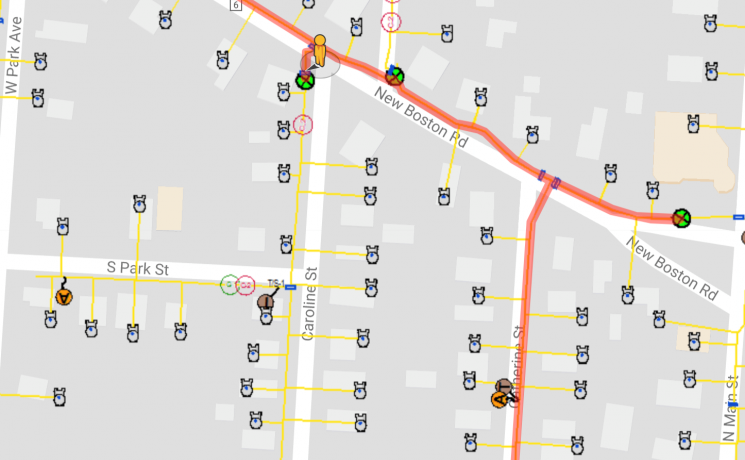
 Previous
Previous



